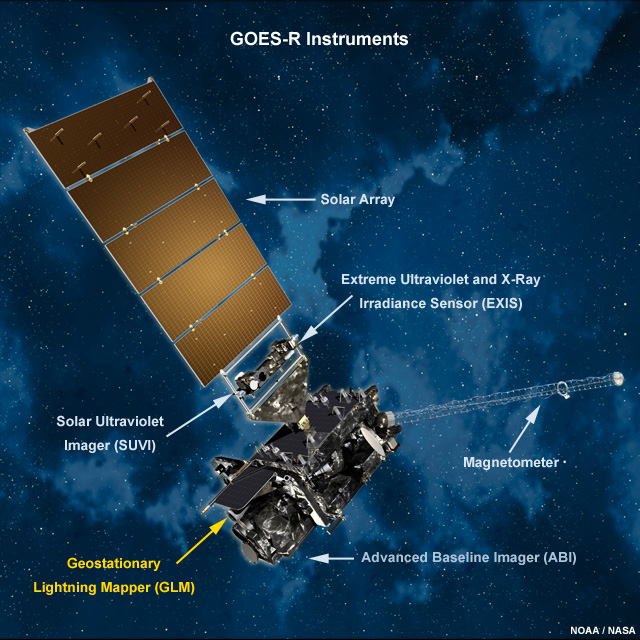About the GLM »
Introduction
This lesson describes the need for real-time lightning information and the capabilities of the Geostationary Lightning Mapper (or GLM). GLM flies on board the new-generation GOES-R satellites as the first operational lightning detector in geostationary orbit.

Upon completion of the lesson, learners will be able to:
- Describe the GLM’s benefits and capabilities
- Describe the main components of the cloud-to-ground lightning flash life cycle
- Differentiate between how lightning is observed by space-based and ground-based detection systems
- Outline the process of converting GLM observations to a lightning flash product
- Describe how GLM observations will help improve situational awareness and support severe weather warning decisions
- Explain how GLM observations will improve warnings of impending lightning hazards
- Highlight other applications that will benefit from GLM observations